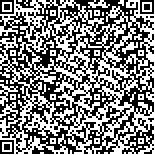|
|
| |
|
|
| 本文已被:浏览 713次 下载 399次 |

码上扫一扫! |
|
|
| 2019—2020年中国9472例流行性感冒确诊患儿中医证候横断面调查 |
|
张喜莲1,2, 马融1,2, 王泓午3, 戎萍1,2, 王梦阳3, 王程婷4, 安子萌1,2, 陈朝远1,2
|
|
1.天津中医药大学第一附属医院, 天津 300381;2.国家中医针灸临床医学研究中心, 天津 300381;3.天津中医药大学公共卫生与健康科学学院, 天津 301617;4.天津市儿童医院, 天津 300074
|
|
| 摘要: |
| [目的]儿童流行性感冒迄今为止尚无规范的中医分型,通过调查2019—2020年冬春季中国儿童流行性感冒中医证候分布规律,为临床精准辨证施治提供参考。[方法]在文献研究及德尔菲法专家问卷的基础上,制定“儿童流行性感冒中医证候调查问卷”,采用分层简单随机抽样的横断面调查方法,对全国6大行政区域18家三甲医院进行问卷调查,分析总结不同年龄、不同流感类型、不同区域患儿中医证型分布特点及各证型患儿症状特点。[结果] 9 472例患儿中,1)风热犯卫证占46.63%,表寒里热证23.41%,毒热内陷证11.07%,风寒束表证8.12%,邪犯肺胃证5.87%,热毒袭肺证4.88%,正虚邪恋证0.02%。2)超高热占4.30%,高热44.52%,中度发热44.37%,低热6.79%。3)甲型流感占90.51%,乙型流感9.49%,均以风热犯卫证为主(分别占46.44%、48.50%)。4)在发热的不同病程阶段,均以风热犯卫证、表寒里热证为多见,随着发热时间的推移风寒束表证比例逐渐下降,热毒袭肺证比例逐渐上升。5)各年龄段均以风热犯卫证、表寒里热证多见,各区域中医证候均以风热犯卫证为主。[结论] 2019—2020年中国儿童流行性感冒以甲型流感为主,中医证型以风热犯卫证、表寒里热证为主;发热为各证型的核心症状,毒热内陷证以高热及超高热为主,其他证型以中高度热为主;不同年龄、不同类型及不同区域中医证型分布均以风热犯卫证为主。 |
| 关键词: 儿童 流行性感冒 中医证型 |
| DOI:10.11656/j.issn.1672-1519.2023.12.01 |
| 分类号:R254 |
| 基金项目:国家中医药管理局中医药标准化项目(GZY-FJS-2018-216); 中华中医药学会标准化项目“儿童流行性感冒中医诊疗指南”; 天津市科技计划项目(18YFZCSY00540); 第五批全国中医临床优秀人才研修项目(国中医药办人教函[2021]271号)。 |
|
| Cross sectional investigation on traditional Chinese medicine syndrome of 9472 confirmed cases of children with influenza in China from 2019 to 2020 |
|
ZHANG Xilian1,2, MA Rong1,2, WANG Hongwu3, RONG Ping1,2, WANG Mengyang3, WANG Chengting4, AN Zimeng1,2, CHEN Zhaoyuan1,2
|
|
1.First Teaching Hospital of Tianjin University of Traditional Chinese Medicine, Tianjin 300381, China;2.National Clinical Research Center for Chinese Medicine Acupuncture and Moxibustion, Tianjin 300381, China;3.School of Public Health, Tianjin University of Traditional Chinese Medicine, Tianjin 301617, China;4.Tianjin Children's Hospital, Tianjin 300074, China
|
| Abstract: |
| [Objective] Since there is currently no standardized traditional Chinese medicine(TCM) classification of influenza in children,the purpose of this study is to investigate the distribution of traditional Chinese medicine syndromes of childhood influenza in winter and spring of 2019-2020,and to provide reference for accurate clinical diagnosis and treatment. [Methods] Based on the literature study and expert questionnaires of Delphi method,we developed the “Children's Influenza Chinese Medicine Syndrome Questionnaire” and used a cross-sectional survey method of stratified simple random sampling to conduct a questionnaire survey in 18 tertiary hospitals in 6 administrative regions of China. We analyzed and summarized the distribution characteristics of TCM syndromes in children of different ages,different influenza types and different regions,and the characteristics of symptoms in children of each type. [Results] Among 9 472 children,1) syndrome of wind heat invading health accounted for 46.63%,syndrome of exterior cold and interior heat 23.41%,toxic-heat internal trapping 11.07%,exterior cold syndrome 8.12%,syndrome of pathogen invading the lung and stomach 5.87%,syndrome of heat toxin invading the lung 4.88%,and syndrome of healthy qi deficiency and lingering pathogen 0.02%. 2) Ultra-high fever accounted for 4.30%,high fever 44.52%,moderate fever 44.37%,and low fever 6.79%. 3) Influenza A accounted for 90.51% and influenza B 9.49%,both of which were dominated by syndrome of wind heat invading health(46.44% and 48.50%,respectively). 4) At different stages of fever,syndrome of wind heat invading health and syndrome of exterior cold and interior heat were common,and the proportion of exterior cold syndrome gradually decreased and the proportion of syndrome of heat toxin invading the lung gradually increased as the fever duration progressed. 5) syndrome of wind heat invading health and syndrome of exterior cold and interior heat were prevalent in all age groups,and syndrome of wind heat invading health was predominant in all regional TCM syndrome.[Conclusion] Influenza A is the predominant type of influenza in Chinese children from 2019 to 2020,and syndrome of wind heat invading health and syndrome of exterior cold and interior heat are the predominant TCM syndromes,and other syndromes are dominated by moderate to high fever. The distribution of TCM syndromes among different ages,types and regions are dominated by syndrome of wind heat invading health. |
| Key words: children influenza traditional Chinese medicine syndrome |
|
|
|
|
